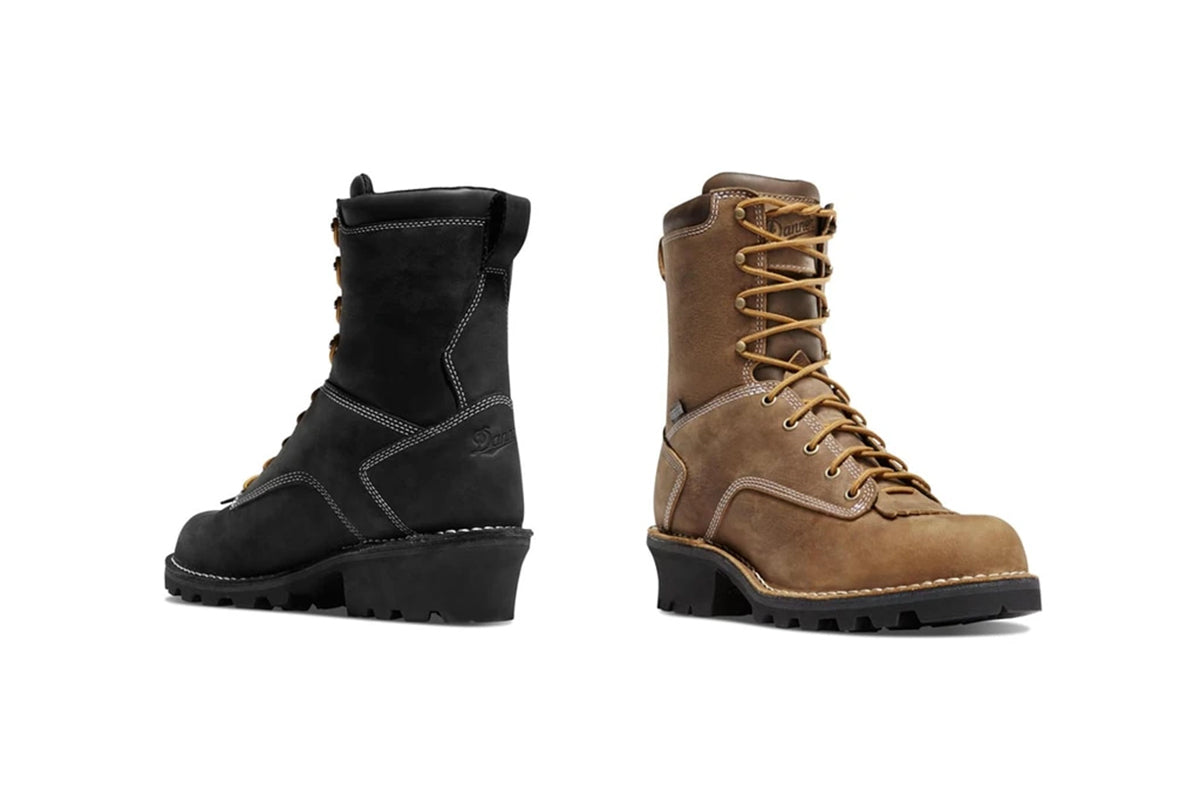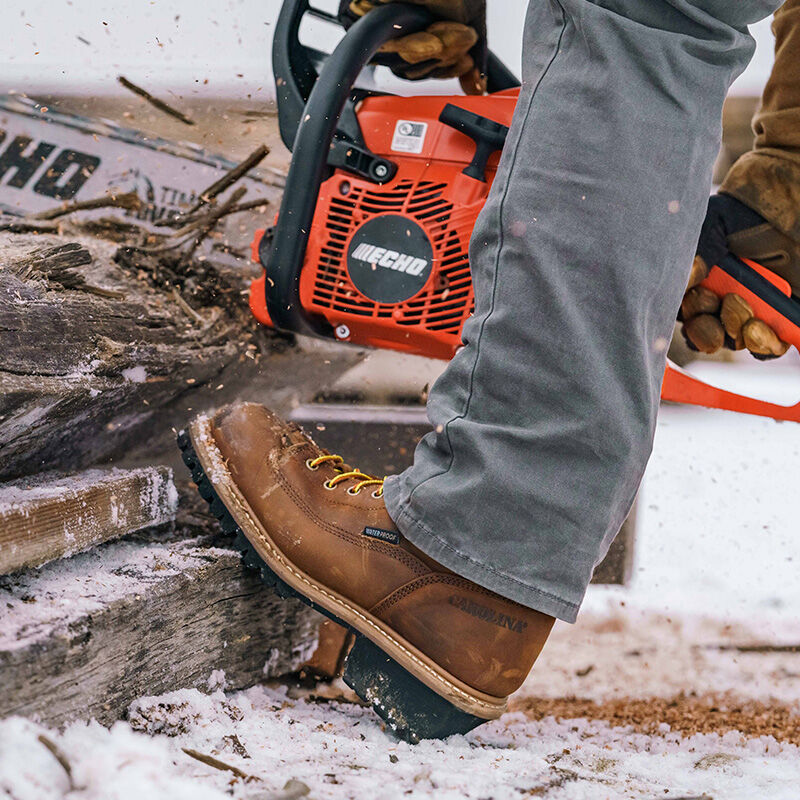Logger boots have high heels to provide stability on uneven terrain and assist in climbing. The raised heel helps secure foot placement on tree limbs and logs.
Logger boots are a specialized type of footwear crucial for forestry workers’ safety and efficiency. Their unique design features, such as high heels, protect against common hazards found in the logging environment. Aside from enhancing stability, these elevated heels prevent slippage, give better traction, and offer extra support while maneuvering through challenging landscapes.
Moreover, such boots often come with reinforced toes and robust materials to shield against cuts, abrasions, and impacts. The increased height also aids in keeping feet dry by elevating them above water and mud. If you’re engaging in logging activities, understanding the functionality of your gear, especially footwear is paramount for your well-being and job performance.

Credit: www.overlookboots.com
Introduction To Logger Boots
Logger boots, steeped in history and rugged functionality, are a staple for forestry workers and outdoor enthusiasts alike. Known for their distinctive design and durability, these boots have evolved to meet the demanding needs of logging professionals. Their high heels are not a fashion statement but a practical feature cultivated through years of outdoor labor challenges. Join us as we delve into the unique world of logger boots and uncover the reasons behind their iconic construction.
The Evolution Of Logger Boots
Originating from the early logging industry, logger boots have a rich history rooted in the old-growth forests of America. Initially crafted as a utilitarian solution for loggers working in treacherous terrain, these boots had to offer both protection and stability. The evolution of logger boots has been a tale of adaptation, as improvements in materials and design have led to the refined versions we see today. Key developments include:
- Rugged soles that navigate the forest floor with ease.
- Enhanced ankle support to prevent injuries.
- Durable construction materials for long-lasting wear.
Over time, technological advancements have been incorporated, ensuring that logger boots remain a reliable choice for those facing the wilderness.
Distinct Features Of Logger Boots
The functionality and safety offered by logger boots are reflected in their distinctive features. Each element serves a specific purpose, tailor-made for the challenges of logging:
| Feature | Function |
|---|---|
| High Heels | Provides elevation for better traction and balance on uneven surfaces. |
| Steel Toe Caps | Shields the feet from falling debris and compression injuries. |
| Waterproofing | Keeps feet dry in wet conditions to avoid discomfort and health issues. |
| Lace-to-Toe Design | Ensures a secure fit and prevents the boot from coming loose. |
These features collectively contribute to the rugged, resilient persona of logger boots and why they continue to be the go-to footwear for heavy-duty outdoor work.

Credit: www.carolinashoe.com
Utility Of The High Heels On Logger Boots
Understanding the practicality of logger boots extends beyond the rugged exterior to their distinctive high heels. These boots, worn by loggers and forestry workers, feature heels that are not a fashion statement but a functional necessity. The utility of the high heels on logger boots is integral to safety and efficacy in challenging outdoor work environments, where stability, traction, and protection are paramount.
Elevation From Ground Conditions
One key advantage of the high heels on logger boots is the elevation above ground conditions. Logging sites are often replete with hazards such as standing water, mud, and slippery surfaces. The additional height provided by the boot heels ensures that feet remain dryer and further from potential ground-borne dangers. This vital separation helps to:
- Reduce moisture infiltration, keeping feet dry.
- Minimize contact with chemicals or irritants on the ground.
- Prevent bites or stings from ground-level insects and reptiles.
Improvement Of Foot Positioning And Stability
High heels on logger boots contribute significantly to foot positioning and stability. They offer a more secure foothold by modifying the foot’s angle, which improves the wearer’s balance, especially when carrying heavy loads or maneuvering tools. Stability is crucial to:
| Benefits | Details |
|---|---|
| Better balance | Affords a solid base to resist tipping or falling over. |
| Reduction of foot fatigue | Less strain on the arches for all-day comfort. |
| Enhanced posture | Aligns the spine to alleviate back stress. |
Traction And Support On Uneven Terrain
Uneven and unpredictable terrain is a constant in the world of logging. The high heels of logger boots enhance traction and support. This lift ensures a deeper grip from the boot’s lug pattern, which can make a monumental difference on slippery slopes and loose underfoot conditions. The heels naturally dig into surfaces for more tenacious traction. This design:
- Promotes stability and control during ascents and descents.
- Prevents the foot from slipping forward in the boot.
- Provides a leverage point that can help when climbing trees or slopes.
In essence, the high heels on logger boots are a crucial feature for the safety and efficiency of the wearer, offering fundamental benefits that make challenging work conditions manageable.
Beyond The Woods: Logger Boots In Fashion And Culture
While logger boots were originally designed for the rugged terrain and hazards of forestry, they’ve evolved far beyond their utilitarian roots. Today, they stride confidently into the world of fashion and cultural iconography, demonstrating remarkable versatility and enduring appeal. The high heels of logger boots, once essential for stability in uneven woodland environments, now elevate the style game, making bold fashion statements on city streets.
Logger Boots As Fashion Statements
Once worn solely by lumberjacks and outdoor laborers, logger boots have climbed the fashion ladder to emerge as a must-have footwear for the style-conscious. Here’s how these boots have made the transition:
- Rugged Aesthetics: The chunky silhouette of logger boots adds a touch of toughness to any outfit, embodying a blend of durability and style.
- Street Style Fusion: Paired with skinny jeans or leather leggings, logger boots inject a raw, edgy vibe into everyday fashion ensembles.
- Designer Interpretations: High-end fashion labels have reimagined logger boots with luxury materials and custom embellishments, welcoming them into the pantheon of haute couture.
Not just a nostalgic nod to the past, logger boots now proclaim individuality and fashion-forward thinking, donned by celebrities and influencers alike.
The Symbolism Of Logger Boots In Cultural Contexts
Logger boots carry a rich legacy that traverses the domains of fashion into the broader cultural landscape:
- Strength and Resilience:
- The heft and build of logger boots symbolize sturdiness, often reflecting the character traits admired in those who originally wore them.
- Blue-collar Pride:
- In various media, logger boots epitomize hard work and the working-class ethos, frequently portrayed in films and art that celebrate these values.
- Outdoor Lifestyle:
- They continue to represent a connection with nature and adventure, appealing to those who seek to embrace an outdoor, active aesthetic.
In cultural contexts, logger boots are not just footwear but emblems of identity and expressions of collective memory, resonating with themes of authenticity and heritage.

Credit: www.amazon.com
Frequently Asked Questions On Why Do Logger Boots Have High Heels
What Is The Purpose Of Heels On Boots?
Heels on boots provide elevation, improving posture and style. They enhance traction, offering stability on various surfaces. Heels also contribute to a distinct fashion statement.
Why Do Boots Have An Elevated Heel?
Boots have elevated heels to improve foot stability, enhance walking comfort, and provide extra support for the arch. This design helps in tasks that require standing for long periods or walking on uneven terrain. Elevated heels also protect against mud and dirt.
What Are Boots With Raised Heels Indicated For?
Boots with raised heels help improve posture and reduce back pain by aligning the spine. They also offer arch support and can enhance the wearer’s height.
Are Logger Boots Good For Your Feet?
Logger boots offer robust support and protection for your feet, making them suitable for rough terrain and demanding work environments. Their durable construction provides stability, which can benefit foot health.
Conclusion
Logger boots stand out for their distinctive high heels, serving more than mere style. These elevated heels provide invaluable safety and efficiency for loggers in their challenging work environment. Whether gripping uneven terrain or climbing, the added height is a functional necessity.
So, next time you spot those iconic boots, remember – it’s all about utility on the job.
